Lunar eclipse with star Spica at 12:08am April 15
The April 2014 lunar eclipse being called a ‘Blood Moon’ may have more of a religious than astronomical meaning. Either way, it sure provided a dramatic show as the Earth’s shadow crept across the moon.
Moonrise in Arizona the 14th was 6:44pm yet at 7:01pm Rich Hill still obstructed the view in Yarnell.
I started out with totally the wrong camera settings.
A full moon is exceedingly bright and my first attempts were washed out.
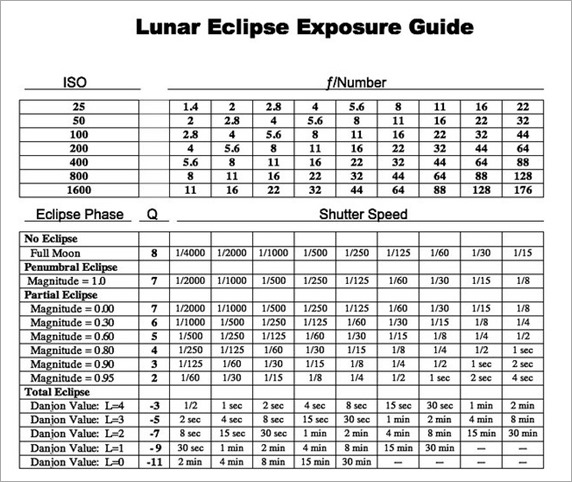
So I Googled camera settings for the lunar eclipse and figured it out. I used my biggest lens zoomed to 300mm, ISO 800, f11, and changed shutter speed from 1/4000 down to 30 seconds over time. Set up on tripod but remote batteries were dead. Keep scrolling down for the show.
Full moon 8:57pm
Earth and Sky defines a lunar tetrad as “four successive total lunar eclipses, with no partial lunar eclipses in between, each of which is separated from the other by six lunar months (six full moons).”
10:59pm 11:14pm 11:31pm 11:40pm
2014:
Total lunar eclipse: April 14-15
Total lunar eclipse: October 8
2015:
Total lunar eclipse: April 4
Total lunar eclipse: September 28
11:48pm 11:59pm 12:01am 12:04am
So why a ‘Blood Moon’? “The full moon nearly always appears coppery red during a total lunar eclipse. That’s because the dispersed light from all the Earth’s sunrises and sunsets falls on the face of the moon at mid-eclipse. Thus the term blood moon can be and probably is applied to any and all total lunar eclipses. We astronomy writers often say it looks blood red. Why? Because it sounds dramatic, and a lunar eclipse is a dramatic natural event.” (from Earth and Sky)
Yet the popularization of the term seems recently introduced by two Christian pastors, Mark Blitz and John Hagee, in their 2013 book Four Blood Moons: Something is About to Change, as representing a fulfillment of Biblical prophecy.
“The sun will be turned to darkness, and the moon to blood before the great and dreadful day of the LORD comes.” Joel 2:31 (Common English Bible)
So the first of the lunar tetrad fell on the beginning of Passover but couldn’t even be seen from Israel. Think what you want. It’s just science.
All full moons have names which typically coincide with seasons. The Harvest Moon occurs most closely to the autumnal equinox. This followed by the Hunter’s Moon, also sometimes called the Blood Moon, which falls on October 8, 2014 and marks the second total lunar eclipse of the lunar tetrad.
My last moon shot with star Spica to the right and Mars upper right at 12:15am on the 15th. Then I lost it in the view finder.
And this shot of stars when trying to re-align at 12:58am. By then I was cold and very tired so gave up and went to bed.
But after some playing around on the computer, I ended up with this.
Did you stay awake for the lunar eclipse?




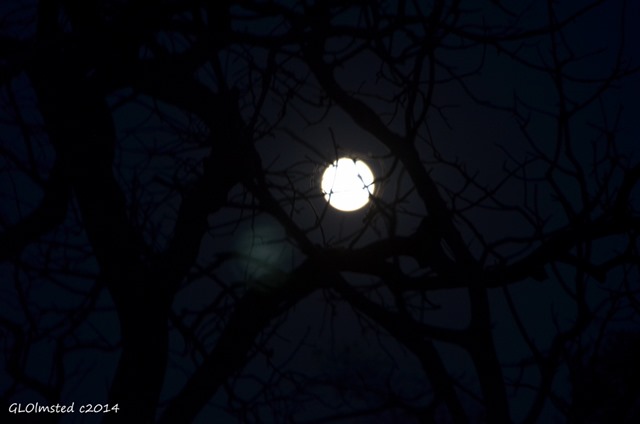
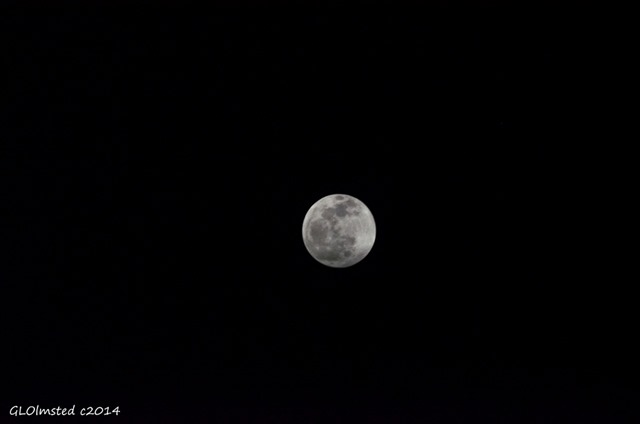
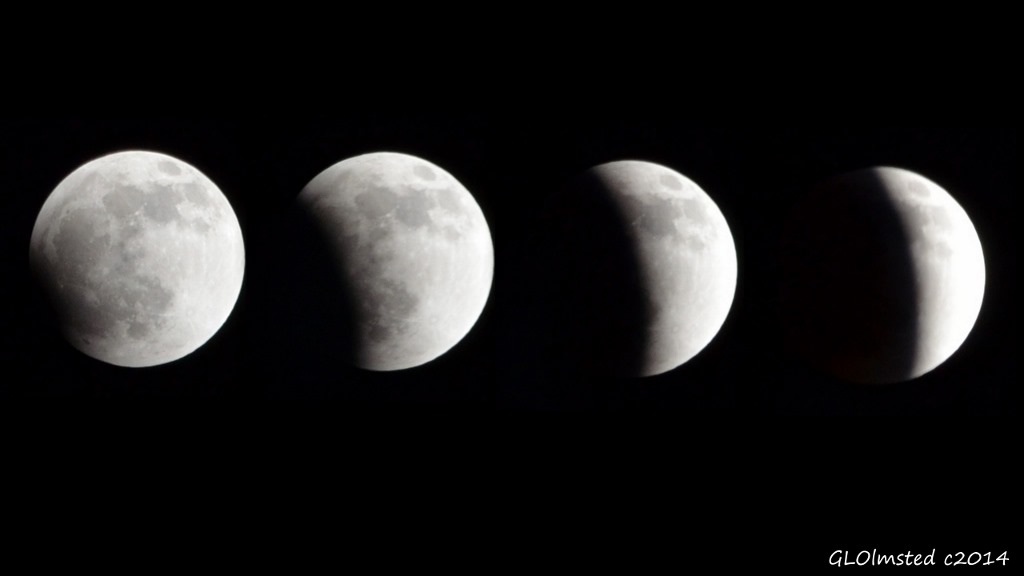
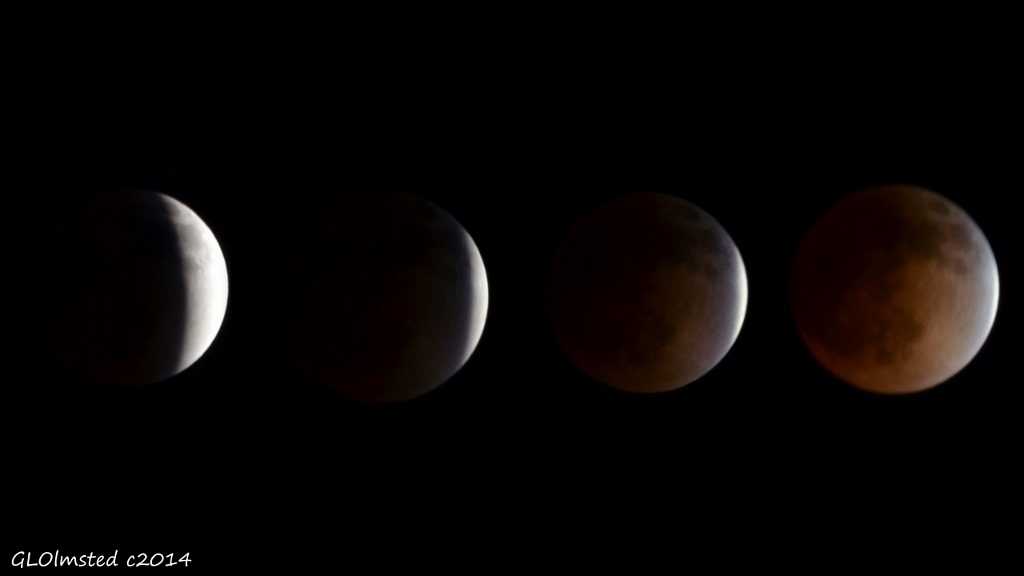
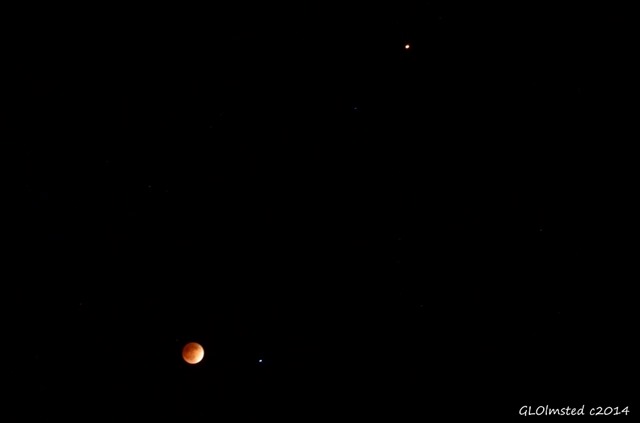
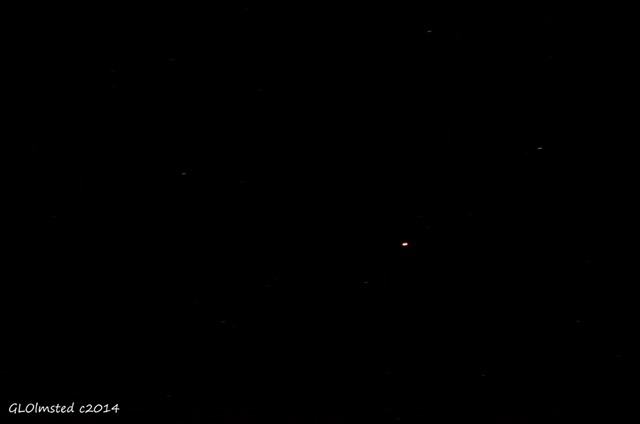
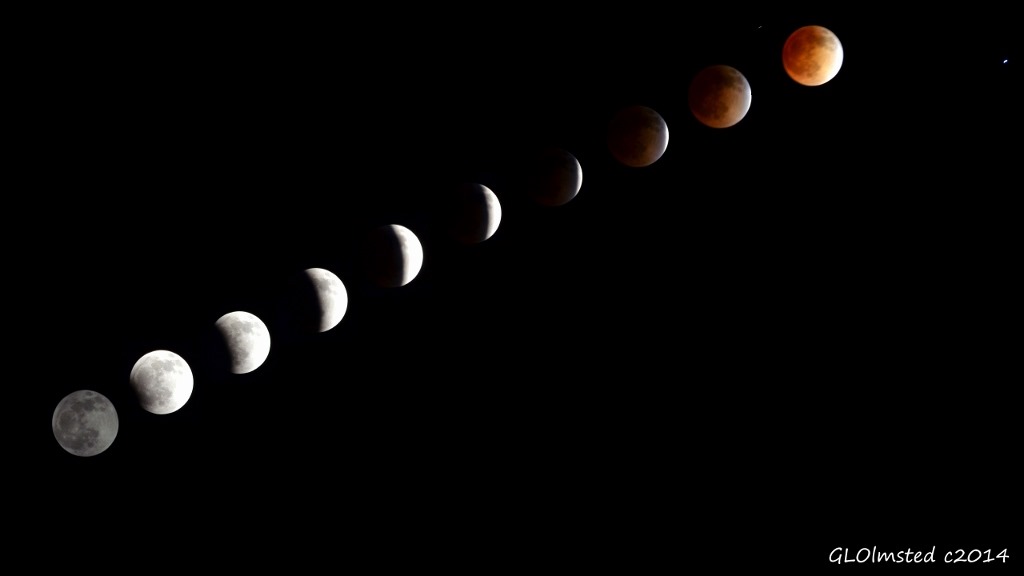





.jpg)
.jpg)